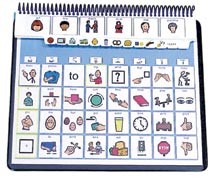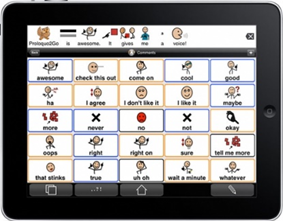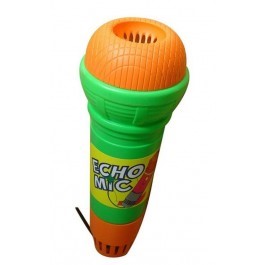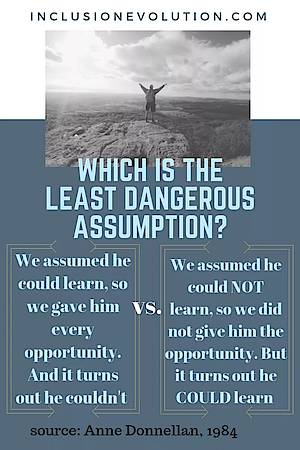By Victoria Alexandria Smith
University of South Carolina-Columbia
This issue of NASET’s Classroom Management series was written by Victoria Alexandria Smith of the University of South Carolina-Columbia. Many students with disabilities are questioned their capability of learning and having a voice at school and in life. There are countless misconceptions made that places a negative stigma on students with disabilities. Regardless of the severity of a child’s disability, they have a right to a voice. They are still a learner that has a right to education. It is morally unjust to discriminate against a child with disabilities. A way to help these students have a voice is having teachers as advocates building awareness and acceptance in the school environment. This article will summarize teachers as advocates and the strategies they use, the importance of students with disabilities, and how they are given a voice in their school environment.
ABSTRACT
Many students with disabilities are questioned their capability of learning and having a voice at school and in life. There are countless misconceptions made that places a negative stigma on students with disabilities. Regardless of the severity of a child’s disability, they have a right to a voice. They are still a learner that has a right to education. It is morally unjust to discriminate against a child with disabilities. A way to help these students have a voice is having teachers as advocates building awareness and acceptance in the school environment. This article will summarize teachers as advocates and the strategies they use, the importance of students with disabilities, and how they are given a voice in their school environment.
I HAVE A VOICE AND I OBSERVE ONE: TEACHERS GIVING SPECIAL-NEEDS STUDENTS A VOICE
In my years of being an educator, I have witnessed Special-Needs students being judged based on their learning abilities, and I made sure to take a stand for them. I expressed each time that Special-Needs students have a voice, and they deserve one. I placed myself in their shoes and imagined how they felt when someone talked about them in their face thinking they did not understand by their assumptions made. If I was that student and I could verbally speak, I would say, “I have a voice and I deserve one.”
ALL STUDENTS WITH DISABILITIES HAVE A VOICE
It is not fair to assume a disabled child is unable to learn. “Fairness” has been defined as the belief that “it is morally wrong, in itself, to treat individuals differently without providing relevant reasons for so doing” (Barrow, p.236). There are children in my class that were questioned whether they could speak and learn. The answer is yes, they can learn and yes, they can speak whether its verbally or not, all students with disabilities have a voice. Some students in my class have language/speech impairments, and they have their own unique ways of communicating with people through a voice recorder, communication picture flip book which is called a “flip ‘n talk” and their use of sign language. Special-Needs students have a voice and they deserve one because they are a part of a learning community with peers and teachers. Shown below are special communicators that Special Education teachers uses in their classroom to help promote and increase their students’ voices.
Communicators Used in Special Education Classrooms


Echo Microphone
Perfect for oral language exercises, sound manipulation, and encouraging correct pronunciation.

Proloquo2Go AAC App for iPad
An app that is a major update to the premier augmentative and alternative communication (AAC) Solution for people who cannot speak.

Ablenet Bigmack Communicator (Voice Recorder)
Bigmack communicator is an excellent choice for persons with visual impairments and speech/language
Flip ‘N Talk Communication Book
The flip ‘n talk is a manual augmentative communication system consisting of a main “core vocabulary board” of high frequency words and an affixed spiral bound flip chart of semantic categories. Vocabulary symbols are a way for individuals to augment their expressive speech and language skills. “Naturally Aided Language Stimulation” strategies can be easily used to model language with this system. The flip ‘n talk can also serve as a model for complete sentence generation by the communication partner.

ASSUMPTIONS AND MISCONCEPTIONS
People that are unaware of the knowledge of students with disabilities commonly make assumptions and have misconceptions. They question whether these students can speak, comprehend educational content and learn in a classroom setting. When you think about it, assumptions can have a negative impact on our students. Teachers, parents, and administrators that may make assumptions are dangerous to students with disabilities because low expectations will be set in mind. It’s so important that every student with disabilities is given the opportunity to be included in learning and having a voice. When we presume incompetence and fail to give the child the support, they need to be successful we are the problem, not the child.
Researcher, advocate and Special Education teacher, Anne Donnellan, created the “the least dangerous assumption” theory. She stated that, “the criterion of least dangerous assumption holds that in the absence of conclusive data, educational decisions ought to be based on assumptions which, if incorrect, will have the least dangerous effect on the likelihood that students will be able to functional independently as adults.” (Donnellan, p.1)
This reminds me of one student in my class. It was believed that this student could not talk because he was so quiet in the beginning of the school year. Before, he started school, it was told by his previous teachers that he barely talked. Even, his older brother would say, “Oh, he can’t talk, he doesn’t speak.” In disbelief, I would always say, “Yes, he can speak. He has a voice. He can talk.” Without a doubt, this student is the most talkative one in the class and won’t stop talking. He’s hilarious! He repeats every interesting word he hears that he likes, such as “Prediction and Responsibility.” The list goes on. He now speaks in complete sentences and it has blown all of his teachers away including me. “He has a voice and he deserve one.” Teachers can redirect assumptions and misconceptions by enlightening people of students with disabilities. You are your student’s hero, you have to stand up for them. I believe that my student did not talk much at first because he wasn’t inspired and encouraged to at his previous school. A child that is acknowledged on a daily basis and feel valued will come out of their shell and blossom.
IMPORTANCE OF SPECIAL-NEEDS STUDENTS VOICE & THEIR SUCCESSES
Giving Special-Needs students a voice is essential to their development as an individual and learner. All Special-Needs students need to feel appreciated and valued in their class, by their teachers and their peers. Research indicates that students who believe they have a voice in school are seven times more likely to be academically motivated than students who do not believe they have a voice. (Quaglia Institute for School Voice and Aspirations, 2016) Students with disabilities feel empowered when they are treated equally and given a voice in their life. I believe that students with disabilities are capable of becoming successful adults.
A 20-year research study has been conducted by the Frostig Center in Pasadena, California. The research traced the lives of individuals with learning disabilities in an attempt to identify factors that predicted successful life outcomes. It was guided by Dr. Marshall H. Raskind and Dr. Roberta J. Goldberg, they believed that:
Children with learning disabilities grow up to be adults with learning disabilities. That is, many of the difficulties experienced in childhood continue into and through adulthood. Nevertheless, some individuals with learning disabilities follow a life path that leads them to success, becoming productive members of society and living satisfying and rewarding lives.
As teachers, we need to advocate for our students with disabilities and believe they are capable of achieving high goals. Our high expectations for students with disabilities will have no harm to them as opposed to having low expectations and they are capable of achieving more.
TEACHERS AS ADVOCATES FOR THEIR STUDENTS
All Special Education teachers must be advocates for their students or else who would be? There are some parents that believe their child cannot complete particular tasks that are done at school by their child. Every person that a Special-Needs child has in their life must be their advocate and cheer them on that they can achieve life and learning goals. Ways that teachers can advocate for their students is educating their school community about students with disabilities.
TEACHING STUDENTS ABOUT OTHER STUDENTS WITH DISABILITIES
Teachers can teach their students about students with disabilities by having an open heart to heart conversation. I believe that a conversation and use of literature will help young children understand that everyone is in unique in their own way, but we are all still the same inside and have the same heart. Teachers have to express the importance of equality and how everyone should be treated with respect and love as they would want to be treated. Students need to be taught that despite our differences, we all are the same. On a daily basis as a teacher, I am instilling in children with no disabilities about love and kindness. It’s so important for teachers to teach their students about people who are different from them and empathize on love and friendships. My school does a phenomenal job on making the children in my class feel a part of the school community. Our children have a voice in the school community, is loved and well known by students and staff. Every student in my class without a doubt is known by their name, and their warm and fuzzy personality. It touches my heart to know that my students are not unknown, and invisible. At my Elementary School, a General Education teacher came together with Special Education teachers to implement a program that teaches children about students with disabilities. The program allows students to spread empathy and acceptance in the school community. The program was encouraged by the book, Wonder by R.J. Palacio. After, reading and learning about students with disabilities, that class became “buddies” to my students. The buddies encourage students with disabilities to talk more and help the nonverbal students have a voice. They have a voice, and they deserve it.
My class is considered a low incidence Special-Needs class. The verbal students in my class have learned to communicate with their nonverbal and speech impairment peers. The students were taught to communicate with these students by asking yes/no questions. They know to wait patiently for them to nod their head for “yes” or turn their head to one side for “no.” As well, they know to wait patiently for the student to use their “voice” by using their communicators such as the flip ‘n talk and voice recorder. My classroom climate and practices reinforced the expectation that these students would be a respected member of the group and given a turn during lessons to participate. The children willingly made the small adjustments that enabled them to participate fully in classroom.
STRATEGIES FOR SPECIAL EDUCATION TEACHERS TO INCREASE STUDENTS’ VOICES
Special Education teachers need to create learning spaces for their students to use, practice and grow their voice. Special Education teachers need to create a learning space that is based on the interests and passions of the students. Special Education teachers should use Morning Meetings to develop students social and emotional skills to prep them for learning. Morning meetings gives the students an opportunity to have a voice amongst their peers and they are being encouraged to engage through interaction with their teacher as well. Teachers can use Responsive Classroom Strategies such as creating rules together, modeling positive behaviors, guiding discoveries, thinking about how the classroom is organized, using collaborative problem solving and working with families.
GIVING STUDENTS A VOICE IN THEIR SCHOOL COMMUNITY
Special Education teacher, Allison Ellenwood, states, ““Mahatma Gandhi said, “You must be the change you want to see the in world.” It all starts with us. Change does not have to be expensive, but its price is action. If you see a need and you can fill it; do it! You don’t have to start big.” I agree with this quote. It starts with the teacher first. Special Education teachers can start making sure all the students in their class is treated equally regardless of their learning abilities. Your attitudes are what motivates and gives your students a voice. Make your students feel appreciated and loved. Make sure to include all students in learning activities. Make sure all students are acknowledged in everything done in the class regardless of whether they’re verbal or not. Making sure communicators are used daily allows students to express their needs/wants and communicate effectively with their teachers and peers. This is their voice.
REFERENCES
Berry, R. (2008). Novice teachers’ conceptions of fairness in inclusion classrooms. Teaching and Teacher Education, 24(5), 1149-1159.
C. (n.d.). WHICH IS THE LEAST DANGEROUS ASSUMPTION? [Digital image]. Retrieved from www.inclusionevolution.com/least-dangerous-assumption/
Ellenwood, A. G. (n.d.). Becoming a Teacher Ambassador to Combat Bullying of Students with Special Needs in an Elementary School Setting. National Association of Special Education Teachers, bullying of children series, 1-4.
Jorgensen, C. (2005). The Least Dangerous Assumption A Challenge to Create a New Paradigm. Creating Solutions,6(3), disability solutions, 1-16. Retrieved from www.uwosh.edu/coehs/cmagproject/readings/documents/Least_Dangerous_Assumption.pdf
Quaglia Institute for School Voice and Aspirations. (2016.) School voice report 2016. Retrieved from quagliainstitute.org/dmsView/School_Voice_Report_2016
________________________________________
ABOUT THE AUTHOR
Victoria Smith is a Special Education Teacher Assistant in a Low-Incidence classroom at Carolina Park Elementary School in Mount Pleasant, South Carolina. She assists the classroom teacher in teaching students from Kindergarten-Fifth grade. She attended Long Island University for undergraduate and is currently pursuing her Master’s in Education at the University of South Carolina.
To Access this Article
To download a PDF file version of this issue of NASET’s Classroom Management Series: CLICK HERE

